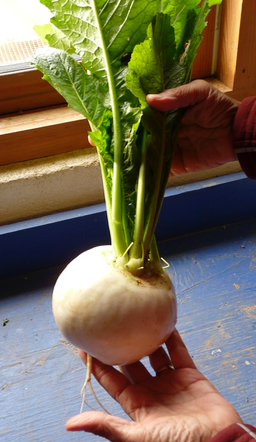Plant Now for Flowers Next Year!
Contributed by Harry
As the weather cools down, you may find yourself dreaming of NEXT year’s flower bouquets.
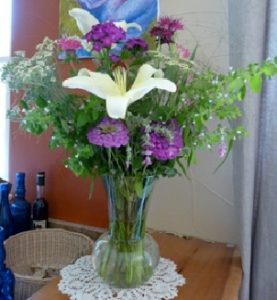 Now is the time to prepare for at least some of your future garden, because many plants, usually biennials (plants that have a two year life cycle), need a period of cold before they will bloom.
Now is the time to prepare for at least some of your future garden, because many plants, usually biennials (plants that have a two year life cycle), need a period of cold before they will bloom.

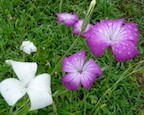 Plants like Agrostemma (corn cockles), Bupleurum, bachelor buttons, larkspur, Nigella, Saponaria (soapwort), Scabiosa (pincushion flower) that bloom in early spring can be planted now by direct seed. (Though it may be too late in some areas –check with your local cooperative extension office.) Follow the directions provided on the seed packet or catalog for soil depth and exact timing (larkspur, for example won’t germinate if the soil is too warm).
Plants like Agrostemma (corn cockles), Bupleurum, bachelor buttons, larkspur, Nigella, Saponaria (soapwort), Scabiosa (pincushion flower) that bloom in early spring can be planted now by direct seed. (Though it may be too late in some areas –check with your local cooperative extension office.) Follow the directions provided on the seed packet or catalog for soil depth and exact timing (larkspur, for example won’t germinate if the soil is too warm).
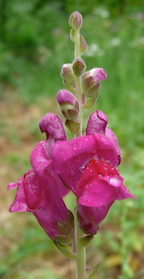
Other biennials/perennials, like foxglove, Echinacea, snapdragons, lupine and Rudbeckia (black-eyed Susan), Dianthus (sweet William) and others should have been started as seed back in mid- to late summer, but if you can find starts (young plants) at your local nursery, now is the time to get them in.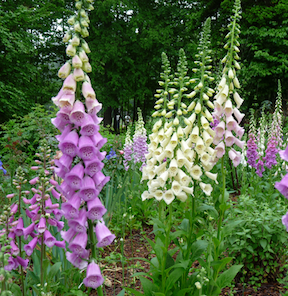
Yet other flowers like cosmos, zinnia, sunflowers and many more are annuals and are planted in spring. So dream on and make your plans for them in patience.
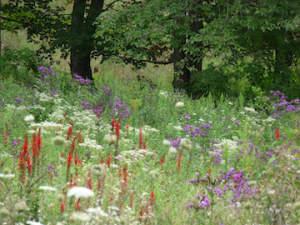 Or, if you would rather have Nature do your gardening for you in a ‘wilder’ setting, there are some native wildflowers with which you can assist.
Or, if you would rather have Nature do your gardening for you in a ‘wilder’ setting, there are some native wildflowers with which you can assist.
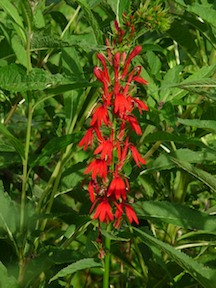 I am having a hard time thinking of a brighter red naturally occurring in wild Nature than a Cardinal Flower (Lobelia cardinalis) other than its namesake, a mature male Cardinal himself. The North American native Cardinal Flower grows in USDA Hardiness Zones 3 through 9 in wet, poorly drained places, though they also grow in drier conditions. (Cornell University claims they may survive even in Zone 2!)
I am having a hard time thinking of a brighter red naturally occurring in wild Nature than a Cardinal Flower (Lobelia cardinalis) other than its namesake, a mature male Cardinal himself. The North American native Cardinal Flower grows in USDA Hardiness Zones 3 through 9 in wet, poorly drained places, though they also grow in drier conditions. (Cornell University claims they may survive even in Zone 2!)
Cardinal Flower prefers full sun in cooler climates but needs part shade in the warmer part of its range. (They are very happy in the middle of our wet Zone 6 mountain meadow.)
To have your own intensely red insect attractant, collect the seed when the seed heads have matured (or purchase from a reputable seed source) and scatter the tiny seeds where you want them to establish. (Where you can easily see them, of course!) Scatter these seeds in late fall soon after they ripen or through early Spring since they also need to be “stratified” by cold to germinate. Do not cover them because, as with most tiny seeds, they need light to germinate.
Since Cardinal Flower is a short-lived perennial, let the plants reseed (which they should do naturally) to maintain the population.
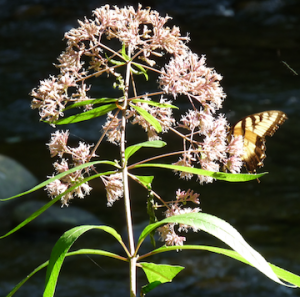 The tall pink-lavender topped Joe-Pye Weed (there are several Eutrochium species) with its whorled leaves is native to Zones 4 through 9. Growing and germinating conditions for Joe-Pye Weed are similar to Cardinal Flower. You might want to plant these as more of a ‘backdrop’ since these plants can get quite tall.
The tall pink-lavender topped Joe-Pye Weed (there are several Eutrochium species) with its whorled leaves is native to Zones 4 through 9. Growing and germinating conditions for Joe-Pye Weed are similar to Cardinal Flower. You might want to plant these as more of a ‘backdrop’ since these plants can get quite tall.
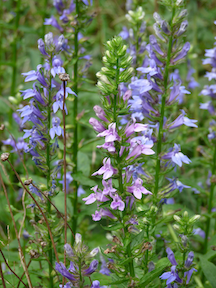 And Great Blue Lobelia (Lobelia siphilitica) is also native to Zones 2 through 9, from the Atlantic coast to the Rocky Mountains and blooms in late summer with the other two flowers above. Growing and germinating conditions are the same as above for this beautiful, though somewhat shorter, plant.
And Great Blue Lobelia (Lobelia siphilitica) is also native to Zones 2 through 9, from the Atlantic coast to the Rocky Mountains and blooms in late summer with the other two flowers above. Growing and germinating conditions are the same as above for this beautiful, though somewhat shorter, plant.
These three plants bloom in late summer (late July to early September around here) when the bees need to be collecting nectar for winter honey stores and before the later Asters and Goldenrod begin blooming.
Get out there and beautify the future!
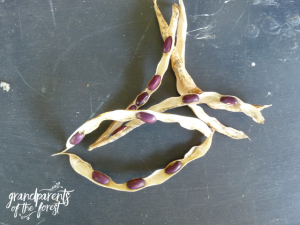 If you intentionally let some of your crops go to seed, like the dill, cilantro, beans, calendula, sunflowers, etc. (see
If you intentionally let some of your crops go to seed, like the dill, cilantro, beans, calendula, sunflowers, etc. (see 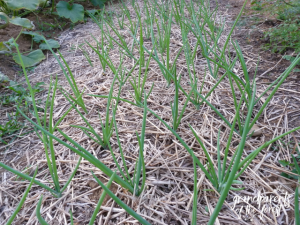 If you like garlic or onions and have the room, now is the time to plant some so it will be ready next year. The onions in the photo at left are bunching onions. We will pull them through the winter to add to recipes. Notice the straw mulch to keep down weeds.
If you like garlic or onions and have the room, now is the time to plant some so it will be ready next year. The onions in the photo at left are bunching onions. We will pull them through the winter to add to recipes. Notice the straw mulch to keep down weeds. We greatly miss the fresh blueberries we used to grow on our farm and have wanted to visit a blueberry farm down the road from us ever since we found out about it. We finally had the time and memory to go during blueberry season.
We greatly miss the fresh blueberries we used to grow on our farm and have wanted to visit a blueberry farm down the road from us ever since we found out about it. We finally had the time and memory to go during blueberry season.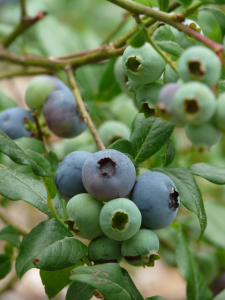
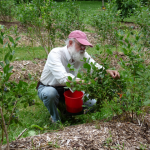

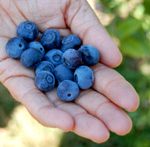 ~ Blueberry bushes are wonderful plants that can be integrated into your landscaping. They are beautiful when they bloom in the spring and in the fall the leaves turn a lovely red. They attract pollinators so your children might have a chance to spot some bees and butterflies. And, of course, there are a plethora of health benefits for all of us when we eat these beautiful treasures. Did you know that they have the ability to increase our brain power! Check with your local extension agent to find out the best varieties for your area.
~ Blueberry bushes are wonderful plants that can be integrated into your landscaping. They are beautiful when they bloom in the spring and in the fall the leaves turn a lovely red. They attract pollinators so your children might have a chance to spot some bees and butterflies. And, of course, there are a plethora of health benefits for all of us when we eat these beautiful treasures. Did you know that they have the ability to increase our brain power! Check with your local extension agent to find out the best varieties for your area. ~ Moonflowers! Do you have a patio, deck or fence – anywhere at all that you can put a plant that will climb? It should be sturdy, because the moonflower vine can get quite large. Moonflowers are amazingly beautiful and will quickly become a perfect addition to your family’s treasured memories. They are related to morning glories and produce huge white blooms that unwind with a twist. Each blossom blooms only for one night. Yes, we said night – thus the name.
~ Moonflowers! Do you have a patio, deck or fence – anywhere at all that you can put a plant that will climb? It should be sturdy, because the moonflower vine can get quite large. Moonflowers are amazingly beautiful and will quickly become a perfect addition to your family’s treasured memories. They are related to morning glories and produce huge white blooms that unwind with a twist. Each blossom blooms only for one night. Yes, we said night – thus the name. ~ Scavenger hunt! Why not have one inside? You can make it a ritual as well. How about every Friday night or rainy day?
~ Scavenger hunt! Why not have one inside? You can make it a ritual as well. How about every Friday night or rainy day?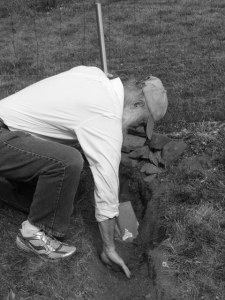 While being serenaded by robins and red-wing blackbirds, ‘we’ dug a trench about 12 feet long by 12 inches wide by 8 inches deep (and had to extend it 3 more feet when we found our bundle of ten was a baker’s dozen). [Ha! Explain the origin of the probably archaic ‘baker’s dozen’ to your little ones.]
While being serenaded by robins and red-wing blackbirds, ‘we’ dug a trench about 12 feet long by 12 inches wide by 8 inches deep (and had to extend it 3 more feet when we found our bundle of ten was a baker’s dozen). [Ha! Explain the origin of the probably archaic ‘baker’s dozen’ to your little ones.] Next we shoveled about an inch layer of compost into the bottom of the trench and laid out the crowns like little octopi, the centers 12 inches apart.
Next we shoveled about an inch layer of compost into the bottom of the trench and laid out the crowns like little octopi, the centers 12 inches apart. Then more compost, unloaded by Deb, and alternating layers of dirt and compost to fill the trench. Lastly a good watering.
Then more compost, unloaded by Deb, and alternating layers of dirt and compost to fill the trench. Lastly a good watering.
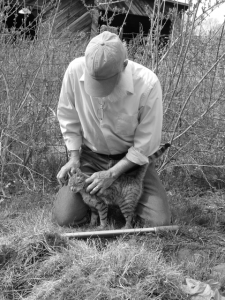
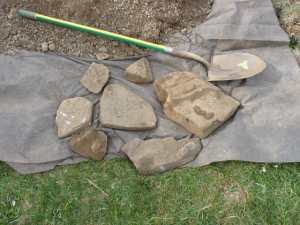 (By the way, very thankfully (?), there were few large ‘cobbles’ to remove from the new bed! But a few definitely turned out to be ‘flagstones’.)
(By the way, very thankfully (?), there were few large ‘cobbles’ to remove from the new bed! But a few definitely turned out to be ‘flagstones’.)
